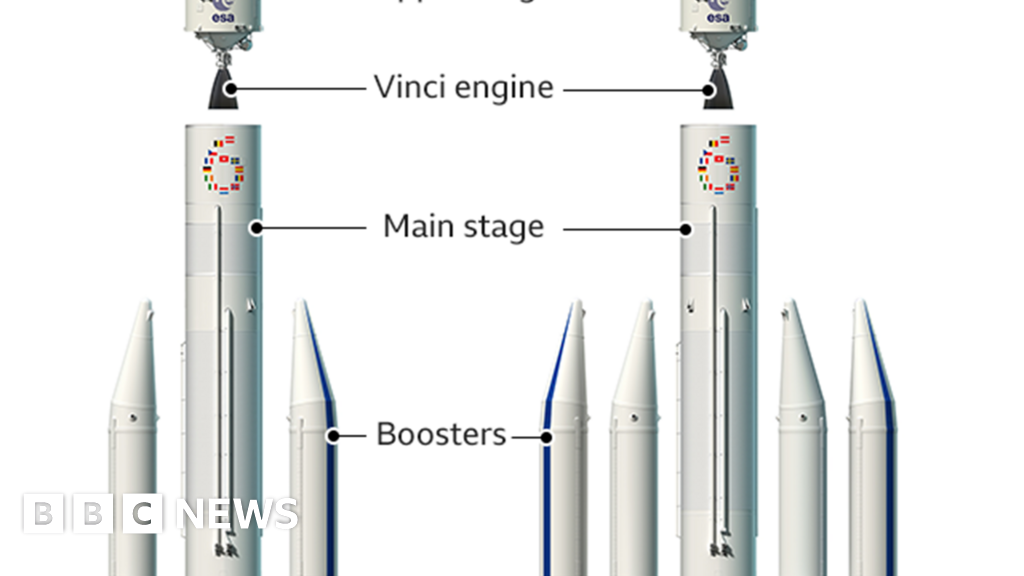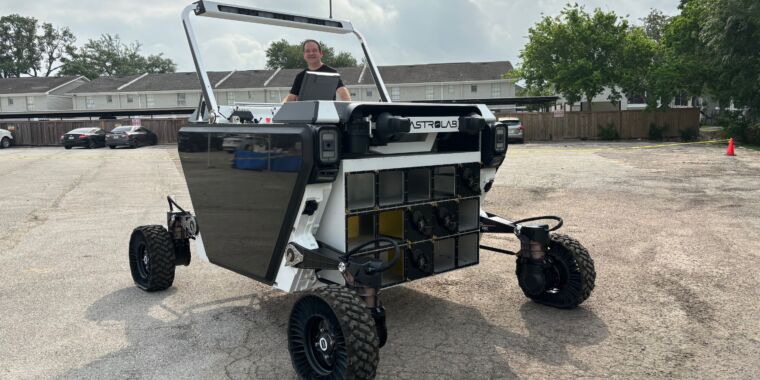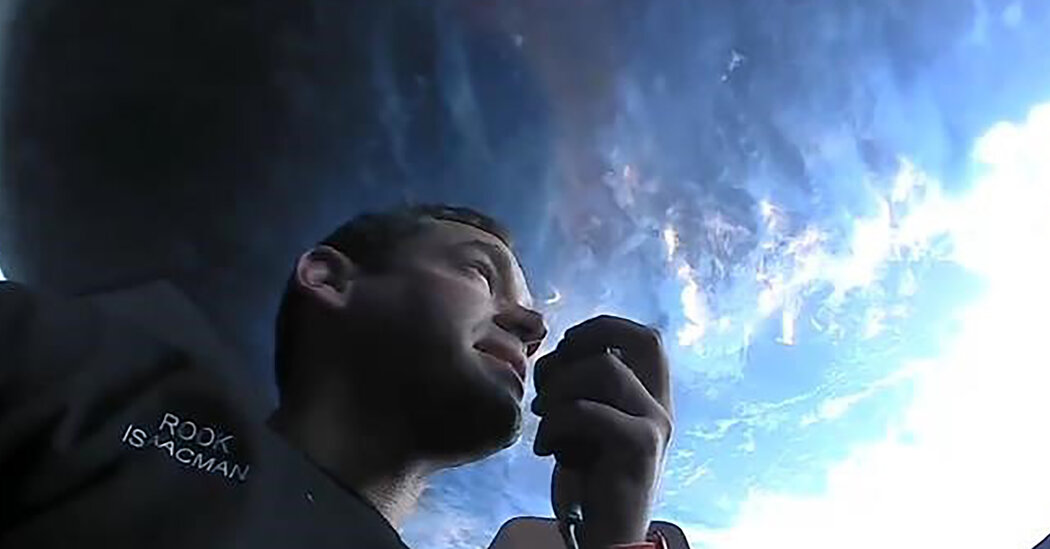Schillernde Ringe und atemberaubend dynamische Atmosphären in Webbs atemberaubender neuer Ansicht des eisigen Riesen Uranus
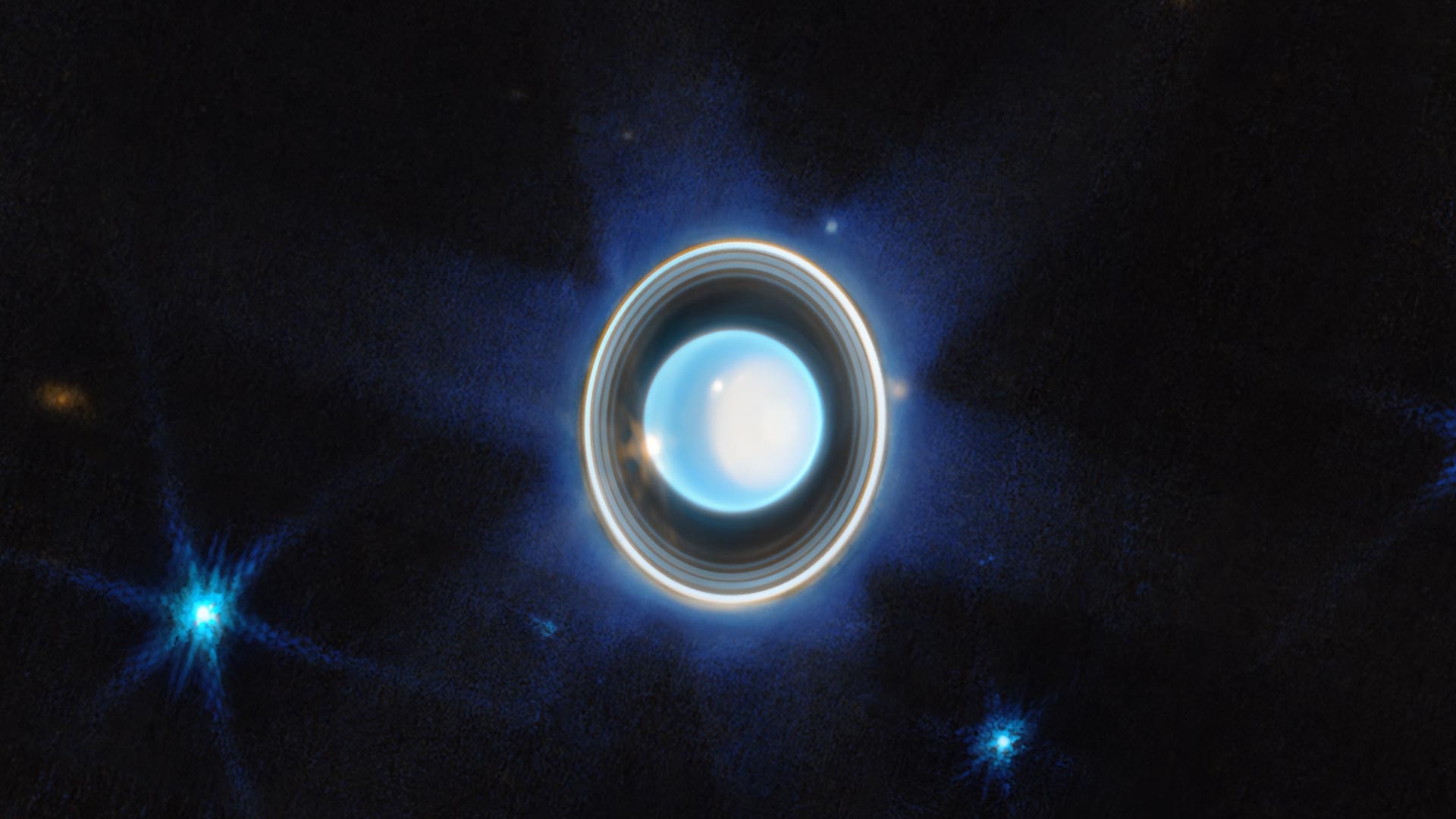
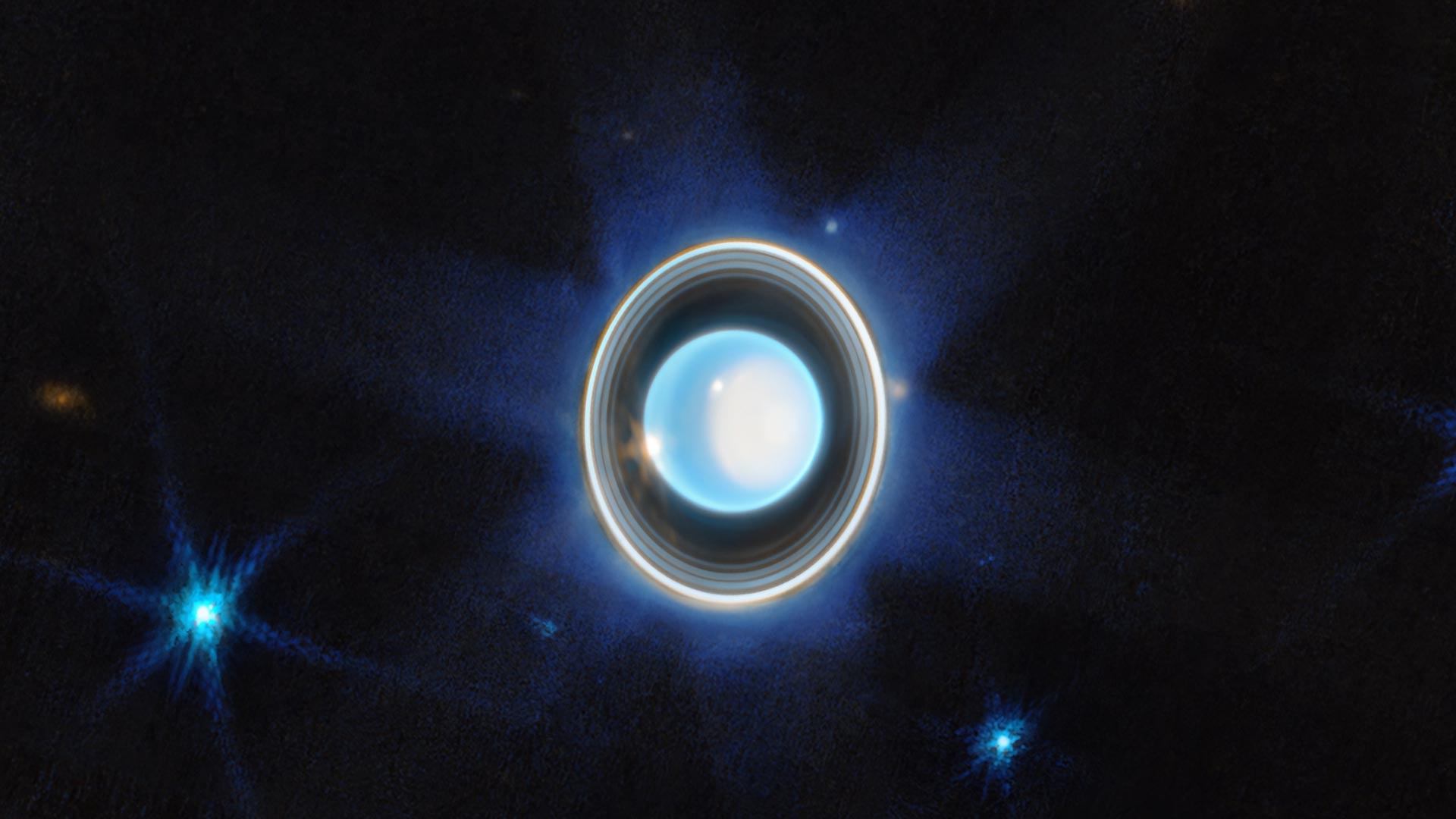
Kredit: Wissenschaft: NASA, ESA, CSA, STScI, Bildverarbeitung: Joseph DiPasquale (STScI)
Das Infrarotbild von Webb hebt die dramatischen Ringe und die dynamische Atmosphäre des Planeten hervor
Universum[{“ attribute=““>Uranus is an oddball in our solar system, tilted on its side as it orbits the sun, causing extreme seasons. While the planet’s atmosphere appeared nearly featureless when visited by the Voyager 2 spacecraft in 1986, subsequent observations from the ground and in space have shown turbulent storms.
NASA’s James Webb Space Telescope recently observed Uranus, and the resulting image highlights a complex system of rings as well as a bright polar cap and likely storm clouds.

This zoomed-in image of Uranus, captured by Webb’s Near-Infrared Camera (NIRCam) on February 6, 2023, reveals stunning views of the planet’s rings. The planet displays a blue hue in this representative-color image, made by combining data from two filters (F140M, F300M) at 1.4 and 3.0 microns, which are shown here as blue and orange, respectively. Credit: Science: NASA, ESA, CSA, STScI, Image Processing: Joseph DePasquale (STScI)
Webb Space Telescope Scores Another Ringed World with New Image of Uranus
Following in the footsteps of the Neptune image released in 2022, NASA’s James Webb Space Telescope has taken a stunning image of the solar system’s other ice giant, the planet Uranus. The new image features dramatic rings as well as bright features in the planet’s atmosphere. The Webb data demonstrates the observatory’s unprecedented sensitivity for the faintest dusty rings, which have only ever been imaged by two other facilities: the Voyager 2 spacecraft as it flew past the planet in 1986, and the Keck Observatory with advanced adaptive optics.
The seventh planet from the Sun, Uranus is unique: It rotates on its side, at roughly a 90-degree angle from the plane of its orbit. This causes extreme seasons since the planet’s poles experience many years of constant sunlight followed by an equal number of years of complete darkness. (Uranus takes 84 years to orbit the Sun.) Currently, it is late spring for the northern pole, which is visible here; Uranus’ northern summer will be in 2028. In contrast, when Voyager 2 visited Uranus it was summer at the south pole. The south pole is now on the ‘dark side’ of the planet, out of view and facing the darkness of space.

This zoomed-in image of Uranus, captured by Webb’s Near-Infrared Camera (NIRCam) on February 6, 2023, reveals stunning views of the planet’s rings. On the right side of the planet, there’s an area of brightening at the pole facing the Sun, known as a polar cap. This polar cap is unique to Uranus because it is the only planet in the solar system tilted on its side, which causes its extreme seasons. A new aspect of the polar cap revealed by Webb is a subtle brightening near the Uranian north pole. At the edge of the polar cap lies a bright cloud as well as a few fainter extended features just northward of the cap’s edge, and a second very bright cloud is seen at the planet’s left limb. Such clouds are typical for Uranus in infrared wavelengths, and likely are connected to storm activity. Credit: Science: NASA, ESA, CSA, STScI, Image Processing: Joseph DePasquale (STScI)
This infrared image from Webb’s Near-Infrared Camera (NIRCam) combines data from two filters at 1.4 and 3.0 microns, which are shown here in blue and orange, respectively. The planet displays a blue hue in the resulting representative-color image.
When Voyager 2 looked at Uranus, its camera showed an almost featureless blue-green ball in visible wavelengths. With the infrared wavelengths and extra sensitivity of Webb we see more detail, showing how dynamic the atmosphere of Uranus really is.

This wider view of the Uranian system with Webb’s NIRCam instrument features the planet Uranus as well as six of its 27 known moons (most of which are too small and faint to be seen in this short exposure). A handful of background objects, including many galaxies, are also seen. Credit: Science: NASA, ESA, CSA, STScI, Image Processing: Joseph DePasquale (STScI)
On the right side of the planet, there’s an area of brightening at the pole facing the Sun, known as a polar cap. This polar cap is unique to Uranus – it seems to appear when the pole enters direct sunlight in the summer and vanish in the fall; these Webb data will help scientists understand the currently mysterious mechanism. Webb revealed a surprising aspect of the polar cap: a subtle enhanced brightening at the center of the cap. The sensitivity and longer wavelengths of Webb’s NIRCam may be why we can see this enhanced Uranus polar feature when it has not been seen as clearly with other powerful telescopes like the Hubble Space Telescope and Keck Observatory.
At the edge of the polar cap lies a bright cloud as well as a few fainter extended features just beyond the cap’s edge, and a second very bright cloud is seen at the planet’s left limb. Such clouds are typical for Uranus in infrared wavelengths, and likely are connected to storm activity.
This planet is characterized as an ice giant due to the chemical make-up of its interior. Most of its mass is thought to be a hot, dense fluid of “icy” materials – water, methane, and ammonia – above a small rocky core.
Das James-Webb-Weltraumteleskop hat ein atemberaubendes Bild des anderen eisigen Riesenplaneten des Sonnensystems, Uranus, aufgenommen. Das neue Bild zeigt aufregende Ringe sowie helle Merkmale in der Atmosphäre des Planeten. Webbs neue Daten für Uranus bieten eine bemerkenswerte Sensitivität und enthüllen den schwächsten Staubring. Der siebte Planet von der Sonne, Uranus, ist seltsam: Er dreht sich auf der Seite in einem Winkel von etwa 90 Grad von der Ebene seiner Umlaufbahn. Dies führt zu ungewöhnlichen Jahreszeiten, da die Pole des Planeten 42 Jahre ununterbrochenes Sonnenlicht und 42 Jahre völlige Dunkelheit erfahren (Uranus braucht 84 Jahre, um die Sonne zu umkreisen). Am Nordpol, der sich auf der rechten Seite dieses Bildes befindet, ist derzeit Spätfrühling; Der Nordsommer wird 2028 auf Uranus sein.
Uranus hat 13 bekannte Ringe und 11 davon sind in diesem Webbild sichtbar. Einige dieser Ringe sind mit Webb so hell, dass sie, wenn sie nahe beieinander liegen, zu einem größeren Ring zu verschmelzen scheinen. Neun werden als Hauptringe des Planeten klassifiziert, und zwei sind die schwachen staubigen Ringe (wie der diffuse Ring von Zeta, der dem Planeten am nächsten ist), die erst 1986 beim Vorbeiflug von Voyager 2 entdeckt wurden. Wissenschaftler erwarten, dass zukünftige Webb-Bilder von Uranus wird die zwei schwachen äußeren Ringe zeigen, die waren Finden Sie es mit Hubble heraus Während der kreisförmigen Flugzeugüberquerung 2007.
Webb hat auch viele der 27 bekannten Uranusmonde eingefangen (die meisten von ihnen sind zu klein und schwach, um sie hier zu sehen); Die sechs hellsten werden im Weitwinkelbild identifiziert. Dies war nur ein kurzes 12-minütiges Belichtungsbild von Uranus mit nur zwei Kandidaten. Das ist nur die Spitze des Eisbergs dessen, was Webb tun kann, wenn er diesen mysteriösen Planeten beobachtet. Weitere Studien von Uranus sind jetzt im Gange, und weitere sind in Webbs erstem Jahr des wissenschaftlichen Betriebs geplant.
Im Jahr 2022 haben die National Academies of Sciences, Engineering, and Medicine die Uranus-Wissenschaft zu einer Priorität in Planetary Sciences and Astrobiology 2023-2033 erklärt Mein Knotenscan.
Das James-Webb-Weltraumteleskop ist das weltweit führende Observatorium für Weltraumwissenschaften. Es wird die Geheimnisse unseres Sonnensystems enthüllen, ferne Planeten um andere Sterne erforschen und mysteriöse Strukturen und die Anfänge des Universums und unseren Platz darin untersuchen. Das Programm ist eine Zusammenarbeit zwischen der NASA, der Europäischen Weltraumorganisation (ESA) und der Canadian Space Agency und wird von der NASA geleitet.

„Musikfan. Sehr bescheidener Entdecker. Analytiker. Reisefreak. Extremer Fernsehlehrer. Gamer.“


